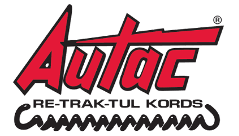Welcome to our comprehensive guide on how to extend the lifespan of your retractable power lead. A retractable power lead is a convenient and versatile tool that provides electrical power for various devices. However, without proper care and maintenance, these power leads can become damaged or ineffective over time. In this article, we will explore practical tips, techniques, and best practices to ensure the longevity of your retractable power lead. Whether you use it at home, in the office, or on the go, these guidelines will help you maximize the lifespan of this essential device.
Your Retractable Power Lead
Retractable power leads, also known as retractable power cords coil are a convenient and practical solution for powering our electronic devices. However, to ensure their longevity and safe operation, it’s essential to take proper care of them. By following a few simple tips and best practices, you can extend the lifespan of retractable power leads and enjoy an uninterrupted power supply for a longer time.
Understanding the Basics of Retractable Power Leads
Before diving into maintenance tips, it’s important to understand the basics of retractable power leads. There are various types available in the market, including USB power leads, laptop power leads, and multi-purpose power leads. Each type has its own specifications and intended uses. Familiarize yourself with the components of your power lead and how they function together.
Handle with Care
When using a retractable power lead, it’s crucial to handle it with care. While extending or retracting the lead, avoid pulling or tugging forcefully, as this can strain the internal mechanism and lead to damage. Gently guide the lead in and out, ensuring smooth operation.
Avoid Overloading
Retractable power leads come with specific power ratings, indicating their maximum load capacity. It’s important to understand these ratings and avoid overloading the lead. Plugging in devices that draw more power than the lead can handle can result in overheating, damage to the lead, and even electrical hazards. Be mindful of the power requirements of your device and use the power lead accordingly.
Protect from Extreme Temperatures
Extreme temperatures can negatively impact the performance and lifespan of retractable power leads. Avoid exposing the lead to excessive heat or cold, as it can cause the insulation to degrade or the internal components to malfunction. Store the power lead in a temperature-controlled environment, away from direct sunlight or freezing temperatures.
Stay Away from Liquids
Water and electricity don’t mix well, and the same applies to retractable power leads. Protect your power lead from spills, moisture, or any other liquid that could damage internal components or cause short circuits. Keep the lead away from sinks, bathtubs, or any other wet areas.
Regular Inspect for Damage
Perform regular visual inspections of retractable power lead to check for any signs of damage. Look for frayed wires, loose connections, or worn-out insulation. If you notice any issues, such as exposed wires or connectors that don’t fit snugly, it’s important to address them promptly. Replace or repair damaged parts to prevent further damage or safety hazards.
Store Properly
When not in use, store retractable power leads properly. Avoid tossing it in a drawer or leaving it in a tangled mess. Coil the lead neatly, avoiding tight knots or twists that can stress the cables. You can use cable organizers, clips, or even reusable Velcro ties to keep the lead organized and tangle-free.
Maintain Tangle-Free Operations
If retractable power leads get tangled, resist the urge to yank it forcefully and untangle it. This can strain the internal mechanism and lead to damage. Instead, take your time to carefully untangle any knots or twists. Gentle patience will help you preserve the integrity of the power lead and ensure its smooth operation.
Avoid Sharp Bends
Sharp bends can weaken the cables and increase the risk of damage to retractable power leads. Avoid bending the lead sharply, especially near the connectors. Minimize stress on the cables by keeping them as straight as possible during use and storage. This will help prevent premature wear and potential failure.
Unplug Correctly
When it’s time to disconnect retractable power leads, do it correctly. Grasp the plug firmly and pull it straight out of the socket. Avoid pulling on the cable to disconnect, as this can strain the internal connections and weaken the lead over time.
Clean Regularly
Dust and debris can accumulate on your retractable power lead over time, affecting its performance and longevity. Clean the lead regularly using a soft, dry cloth to remove any particles. Avoid using liquids or abrasive cleaners, as they can damage the external coating or the connectors.
Use Surge Protectors
To protect retractable power leads and connected devices from power surges, consider investing in a good-quality surge protector. Power surges can occur unexpectedly and cause damage to sensitive electronics. A surge protector acts as a buffer, diverting excess voltage and safeguarding your equipment.
Don’t Modify or Repair Yourself
Unless you have the necessary expertise, it’s best to leave repairs and modifications of retractable power lead to professionals. Tampering with internal components can void warranties and cause further damage. If you encounter any issues with your power lead, consult the manufacturer’s authorized service center or a qualified electrician.
Consider the Manufacturer’s Recommendations
Manufacturers often provide specific guidelines and recommendations for maintaining their retractable power leads. These instructions are based on the product’s design and intended use, so it’s important to follow them. Check the user manual or the manufacturer’s website for any additional tips or precautions related to your specific power lead.
Conclusion
Retractable power leads offer us the convenience of easily connecting and disconnecting our electronic devices. By following the tips and best practices outlined in this article, you can extend the lifespan of retractable power lead and ensure its safe and efficient operation. Handle the lead with care, avoid overloading, protect it from extreme temperatures and liquids, and regularly inspect for damage. Proper storage, tangle-free operation, correct unplugging, and regular cleaning are also essential. Additionally, consider using surge protectors and following the manufacturer’s recommendations for optimal performance and longevity.
FAQs
1. Can I repair a damaged retractable power lead myself?
Unless you have the necessary expertise, it’s best to leave the repairs of retractable power lead to professionals. Tampering with internal components can void warranties and cause further damage. Contact the manufacturer’s authorized service center or consult a qualified electrician for assistance.
2. How often should I clean my retractable power lead?
It’s good practice to clean your retractable power lead regularly. Use a soft, dry cloth to remove dust and debris. Depending on the usage and the environment, you can clean it once every few weeks or as needed.
3. Can I use my retractable power lead with a power strip or extension cord?
Yes, you can use retractable power leads with a power strip or extension cord. However, make sure that the power strip or extension cord is rated to handle the load of your devices. Avoid overloading the power strip or extension cord to prevent overheating and electrical hazards.
4. What should I do if I notice frayed wires on my retractable power lead?
If you notice frayed wires on the retractable power leads, it’s important to address the issue promptly. Continued use of a power lead with frayed wires can pose a safety risk. Consider replacing the lead or consulting a professional for repair.
5. Can I use my retractable power lead outdoors?
It depends on the specific model and its specifications. Some retractable power leads are designed for outdoor use and come with weatherproof features. However, others may not be suitable for outdoor use. Refer to the manufacturer’s guidelines to determine whether your power lead is suitable for outdoor applications.



Recent Comments